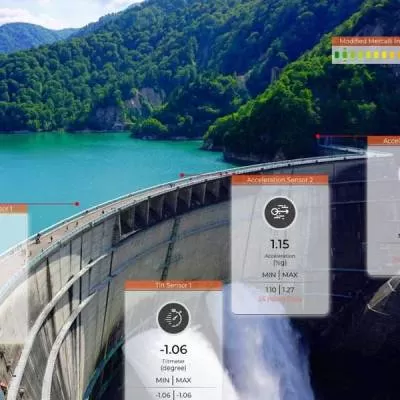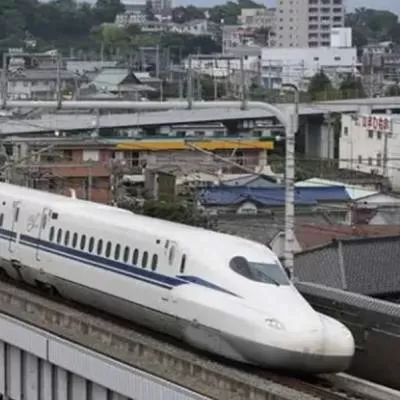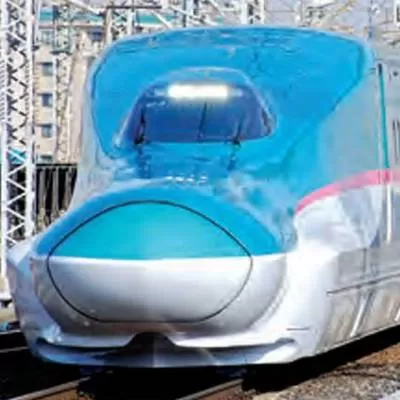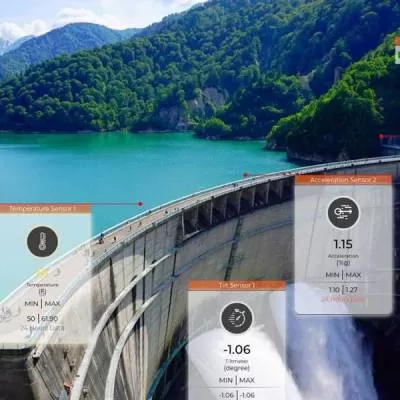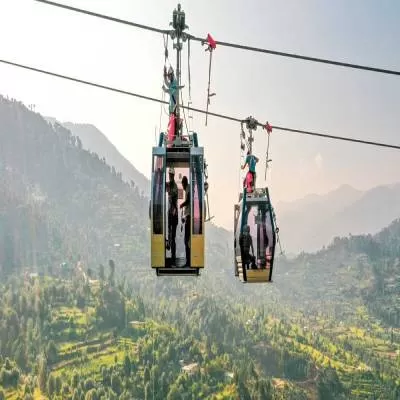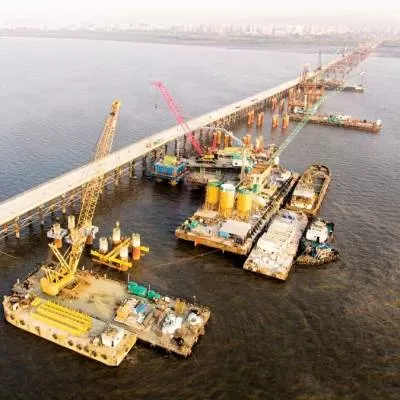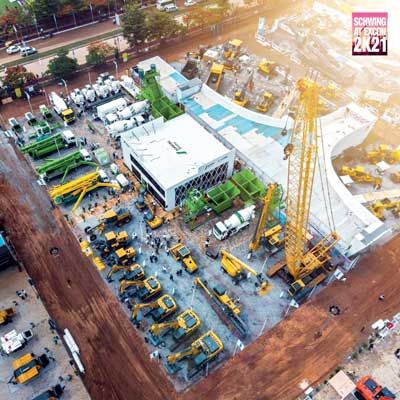
What will it take to rebuild Nepal?
On April 25, 2015, a 7.8-magnitude earthquake hit Nepal, its worst natural disaster in 80 years, causing devastation across the impoverished nation, claiming the lives of over 7,200 people, damaging 530,000 houses and leaving 2.8 million Nepalese displaced. In the major areas affected by the disaster, half the buildings have been destroyed. Moreover, for Nepal, the loss of so many ancient, sacred buildings has been additionally traumatic.
So how does one go about setting things right? ¨There is no clear concept to rebuild Nepal,¨ responds Rajlakshmi Golchha, Member of the Constituent Assembly, Government of Nepal. ¨It is chaotic; there is no proper planning,¨ Even normally, Nepal faces power cuts lasting as long as 16 hours a day owing to a shortfall in generation capacity. Its hospitals, businesses and other critical infrastructure depend heavily on diesel-run backup generators for reliable power supply. It imports all its oil products from India. Additionally, there are reports of serious damage to the 111 mw Rasuwagadhi hydropower station located about 67 km west of the quake´s epicentre. Shigaste was one of the Tibet areas affected and 242 Buddhist temples in the area have been severely damaged. Government agencies in Nepal and China are expected to reassess the planned railway line from Shigaste in Tibet to the Nepalese border.
Cost and requirements
The exact costs of the rebuilding efforts vary and are probably still inaccurate. ¨It is impossible to calculate the damage in terms of cost,¨ says Golchha. ¨The biggest loss is our cultural heritage. Rebuilding a country is a huge task. Western Nepal is fully damaged; schools, hospitals, have all been damaged and wiped out. To rebuild, it will be from zero to back to what it was. We want the natural heritage preserved.¨ For his part, Ram Mahat, Finance Minister, Nepal, told media that the approximate cost to rebuild the nation would be $10 billion (Rs 120 billion) and it would take years.
Measures undertaken
Initially, the government spent a lot of time providing tents to people, until it ran out of budget. ¨There is a group of architects who have proposed to rebuild Nepal as it was.¨ says Golchha. ¨Here, they don´t know disaster management; they are not visionaries. They are not prepared for the epidemics that may come in; there are no measures for waterproofing. We should, in fact, learn something from India when it comes to disaster management.¨ In fact, it is learnt that the Nepal Government has ordered a halt to all new construction activities, stopped issuing building permits and limited building structures to two storeys.
Meanwhile, Peter Kitzes, Executive Director, Seeds of Change Foundation, a non-profit organisation, says, ¨We are working to prevent the spread of disease by the creation of waste management systems and to inspire the rebuilding efforts to utilise sustainable seismic-resistant technologies to prevent future devastation. Our project, Lali Gurans orphanage, which uses these technologies, is only half built, yet was completely unharmed by the devastation. The designs are going to be made open source to encourage firms to use the strongest and longest lasting engineering and architectural designs in a nation with no official building codes. It is scary to think how preventable the damage and loss of life could be if buildings were built with simple codes and seismic-resistant designs. Even scarier yet is thinking how this tragedy will only continue to happen until something innovative is successfully employed.¨An outcome of the disaster is a decision by India and China to jointly launch an earthquake assessment and disaster relief programme covering the vulnerable Himalayan region and other areas. Nepal also has begun a $2 billion earthquake reconstruction and rehabilitation fund, to which the government will contribute $200 million, with the rest being sought from donor agencies and nations.
Equipment
Officials in Nepal said they were struggling owing to lack of high-tech equipment or technology needed to demolish buildings taller than three stories. Also, Mahat reportedly confirmed the same when he said, ¨We don´t have equipment to deal with the situation.¨
To this, Golchha adds, ¨Nepal would love to go back to its own kind of buildings. However, we don´t have excavators; we don´t have the heavy machines that need to clear the roads.¨
Amit Gossain, Executive Vice President-Sales, Marketing & Business Development, JCB India Ltd, highlights building roads, hospitals and schools as the priority for Nepal at the moment. ¨Modern equipment that may not be available in Nepal needs to come in from other countries,¨ he says. ¨Nepal needs to rebuild itself as per the right design required for earthquake-prone areas.¨ JCB has sent $250,000 worth of machines to the stricken country on top of its original $1 million donation, including a fleet of backhoe loaders and electrical generators. ¨We have the expertise and equipment to help rebuild the nation,¨ he adds. ¨Our engineers are already placed in Nepal and our dealer in the country gave whatever stock he had for immediate relief. We have sent equipment and generators as well.¨
Technology
The houses in Nepal were not able to withstand the earthquake because they were not built as per the requirement. Alakesh Roy, Managing Director, Zamil Steel, confirms this, adding, ¨We have a presence in Nepal and are working at building new houses according to the requirement, be it permanent houses or prefabricated structures.¨
Using old tyres to increase the resistance of buildings to earthquakes is an affordable means of minimising damage and can be implemented globally, said Hemanta Hazarika, Professor, Department of Civil & Structural Engineering, Kyushu University, Fukuoka, Japan. A prototype construction of a tyre-retaining wall is planned in Japan within the next few months, which will replace a conventional retaining wall that was destroyed by an earthquake last November in Nagano. Hazarika reportedly said the first one uses tyre chips as a cushion to prevent damage to waterfront structures during earthquakes; the second technique is to use tyre chips or tyre chips mixed with sand or gravel; and the third one, to use whole tyres to protect sea walls and river embankments from scouring and erosion owing to tsunami activity. Test results from experiments have indicated that using these techniques not only leads to reduction of the seismic load but the seismically induced permanent displacement of the structure.
Going forward
Rebuilding is simply not enough. This tragedy has happened before and may happen again. Sustainable building without cutting corners, educating and funding programmes in Nepal to raise awareness in the potential for greater technologies, and the nationwide implementation of mandatory seismic-resistant designs and building codes should be the focus of the Nepal government in the planning of infrastructure.
¨How to create sustainably is an incredibly important right and our responsibility to encourage,¨ remarks Kitzes. ¨We must not only create, but inspire new and better ways of ensuring the safety and success of all societies.¨
To this, Anubhav Jain, Director, Silverglades Group, adds, ¨Stopping unorganised construction and eviction from unsafe buildings are major concerns that require quick action before a tragedy like this occurs again.¨ And Prashant Solomon, Managing Director, Chintels India, comments, ¨For builders, earthquake-resistant structures are mandatory for building approvals; hence, avoid buying properties from unorganised and unprofessional builders.¨
Katie Peters, a research fellow at the Overseas Development Institute (ODI), who works with the Nepalese government on disaster risk, has rightly said that while Nepal endeavours to learn from this tragedy to be better prepared, a failure to invest in ¨building back better¨ and improving infrastructure might prove expensive. Commenting on this, Golchha says, ¨We need people who can do physical work, backed by a survey and written and documented.
That is what will take things forward.¨Indeed, the Nepal earthquake is a lesson for the entire region to bring quality construction and disaster management on the front burner while building in earthquake-prone areas.
¨I think Nepal should build the country according to the Vizag standards,¨ suggests Gossain. Clearly, in the long term, the Nepal Government needs engineers and architects with a solid plan to rebuild the nation and insulate it against further natural disasters.
India Aid
¨No country could do more for Nepal than India would,¨ says Rajlakshmi Golchha, Member of the Constituent Assembly, Government of Nepal.
And, below are the various initiatives on India's part.
- India has sent financial aid and relief workers.
- India's Army and Air Force have been consistently involved since the first tremor in April, in coordination with the Nepal Army.
- Using equipment donated by JCB, the Indian Army Engineers Task Force has been clearing collapsed non-residential buildings, destruction that generated over 700 cu m of debris.
- Indian engineers have helped conduct controlled demolitions of highly damaged houses apart from constructing rooftop shelters.
CASE STUDY
Lali Gurans orphanage, Kathmandu
HOLCIM initiated Lali Gurans orphanage, which was half-constructed but unharmed and provided shelter to many. Christopher Gish, Founder, Seeds of Change Foundation, presents the perfect case study:
- The site was selected for its clean air and water, safety in seclusion, and economical land value. The design invests in local artisanship by following vernacular building techniques and employing simple, sturdy, locally available materials to minimise embodied energy and maximise lifespan.
- Its concrete made with fly-ash avoids waste, conserves virgin materials and reduces processing energy. In contrast to local concrete buildings finished in stucco, the orphanage´s exposed concrete expresses the typical construction technique. Window frames, built-in furniture and free-standing elements are made from durable, locally sourced teak. The orphanage´s raft foundation and its double exoskeleton frame of 300 mm reinforced concrete are highly engineered as an area of refuge for the entire local community.
- Thermal mass used absorbs radiation throughout the day and releases it at night. During winter, the low sun penetrates deeper, providing warmth. Operable windows allow inhabitants to control temperature and air quality. Larger spaces have cross-ventilation, and the main stairwell provides stack ventilation. Although the orphanage is well-shaded from direct sunlight by its brise-soleil and planting, its glazing allows for plentiful indirect light, reducing electrical use. Fifteen 175 W solar panels provide the building´s entire electricity usage. Drinking water is collected from the ground and rainwater passes through a UV filtration system, and will be stored in large tanks.
Lessons learnt
- Use local construction techniques and materials.
- Promote accessible education in technology, design and sustainable buildings, and use innovative technologies and designs.
- Construct superior, sustainable and seismic-resistant models using global methods.
- Imbibe international building codes.
- Use waste tyres, which are a cost-effective way of protecting buildings.
- Earthquake
- Nepal
- CW
- Rajlakshmi Golchha
- Infrastructure
- Reliable Power Supply
- Rasuwagadhi Hydropower
- Ram Mahat
- Peter Kitzes
- Seeds of Change Foundation
- Lali Gurans
- Amit Gossain
- JCB India Ltd
- Alakesh Roy
- Zamil Steel
- Hemanta Hazarika
- Kyushu University
- Fukuoka
- Japan
- Anubhav Jain
- Silverglades Group
- Katie Peters
- Overseas Development Institute
- ODI
- HOLCIM
- Lali Gurans
With the earthquake causing unmatched destruction, CW explores what is required to get the country back on its feet. On April 25, 2015, a 7.8-magnitude earthquake hit Nepal, its worst natural disaster in 80 years, causing devastation across the impoverished nation, claiming the lives of over 7,200 people, damaging 530,000 houses and leaving 2.8 million Nepalese displaced. In the major areas affected by the disaster, half the buildings have been destroyed. Moreover, for Nepal, the loss of so many ancient, sacred buildings has been additionally traumatic. So how does one go about setting things right? ¨There is no clear concept to rebuild Nepal,¨ responds Rajlakshmi Golchha, Member of the Constituent Assembly, Government of Nepal. ¨It is chaotic; there is no proper planning,¨ Even normally, Nepal faces power cuts lasting as long as 16 hours a day owing to a shortfall in generation capacity. Its hospitals, businesses and other critical infrastructure depend heavily on diesel-run backup generators for reliable power supply. It imports all its oil products from India. Additionally, there are reports of serious damage to the 111 mw Rasuwagadhi hydropower station located about 67 km west of the quake´s epicentre. Shigaste was one of the Tibet areas affected and 242 Buddhist temples in the area have been severely damaged. Government agencies in Nepal and China are expected to reassess the planned railway line from Shigaste in Tibet to the Nepalese border. Cost and requirements The exact costs of the rebuilding efforts vary and are probably still inaccurate. ¨It is impossible to calculate the damage in terms of cost,¨ says Golchha. ¨The biggest loss is our cultural heritage. Rebuilding a country is a huge task. Western Nepal is fully damaged; schools, hospitals, have all been damaged and wiped out. To rebuild, it will be from zero to back to what it was. We want the natural heritage preserved.¨ For his part, Ram Mahat, Finance Minister, Nepal, told media that the approximate cost to rebuild the nation would be $10 billion (Rs 120 billion) and it would take years. Measures undertaken Initially, the government spent a lot of time providing tents to people, until it ran out of budget. ¨There is a group of architects who have proposed to rebuild Nepal as it was.¨ says Golchha. ¨Here, they don´t know disaster management; they are not visionaries. They are not prepared for the epidemics that may come in; there are no measures for waterproofing. We should, in fact, learn something from India when it comes to disaster management.¨ In fact, it is learnt that the Nepal Government has ordered a halt to all new construction activities, stopped issuing building permits and limited building structures to two storeys. Meanwhile, Peter Kitzes, Executive Director, Seeds of Change Foundation, a non-profit organisation, says, ¨We are working to prevent the spread of disease by the creation of waste management systems and to inspire the rebuilding efforts to utilise sustainable seismic-resistant technologies to prevent future devastation. Our project, Lali Gurans orphanage, which uses these technologies, is only half built, yet was completely unharmed by the devastation. The designs are going to be made open source to encourage firms to use the strongest and longest lasting engineering and architectural designs in a nation with no official building codes. It is scary to think how preventable the damage and loss of life could be if buildings were built with simple codes and seismic-resistant designs. Even scarier yet is thinking how this tragedy will only continue to happen until something innovative is successfully employed.¨An outcome of the disaster is a decision by India and China to jointly launch an earthquake assessment and disaster relief programme covering the vulnerable Himalayan region and other areas. Nepal also has begun a $2 billion earthquake reconstruction and rehabilitation fund, to which the government will contribute $200 million, with the rest being sought from donor agencies and nations. Equipment Officials in Nepal said they were struggling owing to lack of high-tech equipment or technology needed to demolish buildings taller than three stories. Also, Mahat reportedly confirmed the same when he said, ¨We don´t have equipment to deal with the situation.¨ To this, Golchha adds, ¨Nepal would love to go back to its own kind of buildings. However, we don´t have excavators; we don´t have the heavy machines that need to clear the roads.¨ Amit Gossain, Executive Vice President-Sales, Marketing & Business Development, JCB India Ltd, highlights building roads, hospitals and schools as the priority for Nepal at the moment. ¨Modern equipment that may not be available in Nepal needs to come in from other countries,¨ he says. ¨Nepal needs to rebuild itself as per the right design required for earthquake-prone areas.¨ JCB has sent $250,000 worth of machines to the stricken country on top of its original $1 million donation, including a fleet of backhoe loaders and electrical generators. ¨We have the expertise and equipment to help rebuild the nation,¨ he adds. ¨Our engineers are already placed in Nepal and our dealer in the country gave whatever stock he had for immediate relief. We have sent equipment and generators as well.¨ Technology The houses in Nepal were not able to withstand the earthquake because they were not built as per the requirement. Alakesh Roy, Managing Director, Zamil Steel, confirms this, adding, ¨We have a presence in Nepal and are working at building new houses according to the requirement, be it permanent houses or prefabricated structures.¨ Using old tyres to increase the resistance of buildings to earthquakes is an affordable means of minimising damage and can be implemented globally, said Hemanta Hazarika, Professor, Department of Civil & Structural Engineering, Kyushu University, Fukuoka, Japan. A prototype construction of a tyre-retaining wall is planned in Japan within the next few months, which will replace a conventional retaining wall that was destroyed by an earthquake last November in Nagano. Hazarika reportedly said the first one uses tyre chips as a cushion to prevent damage to waterfront structures during earthquakes; the second technique is to use tyre chips or tyre chips mixed with sand or gravel; and the third one, to use whole tyres to protect sea walls and river embankments from scouring and erosion owing to tsunami activity. Test results from experiments have indicated that using these techniques not only leads to reduction of the seismic load but the seismically induced permanent displacement of the structure. Going forward Rebuilding is simply not enough. This tragedy has happened before and may happen again. Sustainable building without cutting corners, educating and funding programmes in Nepal to raise awareness in the potential for greater technologies, and the nationwide implementation of mandatory seismic-resistant designs and building codes should be the focus of the Nepal government in the planning of infrastructure. ¨How to create sustainably is an incredibly important right and our responsibility to encourage,¨ remarks Kitzes. ¨We must not only create, but inspire new and better ways of ensuring the safety and success of all societies.¨ To this, Anubhav Jain, Director, Silverglades Group, adds, ¨Stopping unorganised construction and eviction from unsafe buildings are major concerns that require quick action before a tragedy like this occurs again.¨ And Prashant Solomon, Managing Director, Chintels India, comments, ¨For builders, earthquake-resistant structures are mandatory for building approvals; hence, avoid buying properties from unorganised and unprofessional builders.¨ Katie Peters, a research fellow at the Overseas Development Institute (ODI), who works with the Nepalese government on disaster risk, has rightly said that while Nepal endeavours to learn from this tragedy to be better prepared, a failure to invest in ¨building back better¨ and improving infrastructure might prove expensive. Commenting on this, Golchha says, ¨We need people who can do physical work, backed by a survey and written and documented. That is what will take things forward.¨Indeed, the Nepal earthquake is a lesson for the entire region to bring quality construction and disaster management on the front burner while building in earthquake-prone areas. ¨I think Nepal should build the country according to the Vizag standards,¨ suggests Gossain. Clearly, in the long term, the Nepal Government needs engineers and architects with a solid plan to rebuild the nation and insulate it against further natural disasters. India Aid ¨No country could do more for Nepal than India would,¨ says Rajlakshmi Golchha, Member of the Constituent Assembly, Government of Nepal. And, below are the various initiatives on India's part. India has sent financial aid and relief workers. India's Army and Air Force have been consistently involved since the first tremor in April, in coordination with the Nepal Army. Using equipment donated by JCB, the Indian Army Engineers Task Force has been clearing collapsed non-residential buildings, destruction that generated over 700 cu m of debris. Indian engineers have helped conduct controlled demolitions of highly damaged houses apart from constructing rooftop shelters. CASE STUDY Lali Gurans orphanage, Kathmandu HOLCIM initiated Lali Gurans orphanage, which was half-constructed but unharmed and provided shelter to many. Christopher Gish, Founder, Seeds of Change Foundation, presents the perfect case study: The site was selected for its clean air and water, safety in seclusion, and economical land value. The design invests in local artisanship by following vernacular building techniques and employing simple, sturdy, locally available materials to minimise embodied energy and maximise lifespan. Its concrete made with fly-ash avoids waste, conserves virgin materials and reduces processing energy. In contrast to local concrete buildings finished in stucco, the orphanage´s exposed concrete expresses the typical construction technique. Window frames, built-in furniture and free-standing elements are made from durable, locally sourced teak. The orphanage´s raft foundation and its double exoskeleton frame of 300 mm reinforced concrete are highly engineered as an area of refuge for the entire local community. Thermal mass used absorbs radiation throughout the day and releases it at night. During winter, the low sun penetrates deeper, providing warmth. Operable windows allow inhabitants to control temperature and air quality. Larger spaces have cross-ventilation, and the main stairwell provides stack ventilation. Although the orphanage is well-shaded from direct sunlight by its brise-soleil and planting, its glazing allows for plentiful indirect light, reducing electrical use. Fifteen 175 W solar panels provide the building´s entire electricity usage. Drinking water is collected from the ground and rainwater passes through a UV filtration system, and will be stored in large tanks. Lessons learnt Use local construction techniques and materials. Promote accessible education in technology, design and sustainable buildings, and use innovative technologies and designs. Construct superior, sustainable and seismic-resistant models using global methods. Imbibe international building codes. Use waste tyres, which are a cost-effective way of protecting buildings.


